While getting together to give is anchored in many traditional forms of philanthropy across the world, the practice has enjoyed a renaissance over the last 25 years, rippling out from the US towards Europe and more recently to Asia. We know from research on US circles that typically exhibit five characteristics: They pool and give away resources; educate members about philanthropy and issues in the community; include a social dimension; engage members; and maintain their independence.¹
This collaborative approach and emphasis on donor education creates a powerful and influential model for individuals on the early stages of their ‘philanthropy journey’.
Since 2013 we have tracked the development of giving circles across Asia, identifying two broad categories amongst 35 circles in eight countries: those “imported” from the US or UK and the “indigenous” circles with no strong link to Western networks.² We saw several imported models, such as Social Venture Partners (SVP) in India, Japan or Australia, adapt the American model to accommodate local context. Indigenous circles are often highly innovative; Dasra’s giving circles in Mumbai target wealthy donors who benefit from the organisation’s venture philanthropy and research capabilities to choose “best in class” NGOs for each circle to support. SVP and Dasra are highly collaborative circles, forging partnerships with foundations and government agencies, and leveraging additional funds.
While such circles are professionally managed, others are informal and rely on volunteer members for administration, grant management and marketing. New Day Asia in Hong Kong has grown to nearly 90 members since being formed around a dinner table in 2007 to support Asian NGOs working to end child sex trafficking. Despite being volunteer managed it has raised over half a million dollars, partners with local law firms to provide pro bono legal advice to its NGOs, and has raised funds from corporate businesses.
Giving circles in Asia are diverse in their operations, membership and donation size. We believe they are an important and timely development in Asian philanthropy but are dispersed and unconnected across a vast geographical region. In October we are launching a resource website for anyone curious about giving circles in Asia or wanting to locate one to join — www.givingcircles.asia — which we hope will grow into a network of circles that can learn from one another and collaborate to tackle the region’s complex social problems.
Look for the website and Facebook page in October. To request updates contact [email protected].
Rob John is a visiting senior fellow at NUS Business School, Singapore. He was the first executive director of the European Venture Philanthropy Association and co-founded the Asian Venture Philanthropy Network.
¹ Eikenberry, A.M. 2009. Giving Circles: Philanthropy, voluntary association and democracy. Bloomington, IN Indiana University Press. The bulk of academic study in the U.S. has been carried out by Angela Eikenberry (University of Nebraska) and Jessica Bearman. More recently Eikenberry has collaborated with Beth Breeze (University of Kent, Canterbury) to study giving circles in the U.K. and Ireland.
² John, R, 2014. Virtuous Circles: New Expressions of Collective Philanthropy in Asia. Asia Centre for Social Entrepreneurship and Philanthropy, National University of Singapore Business School. Singapore. Available in theWINGS Knowledge Center.

